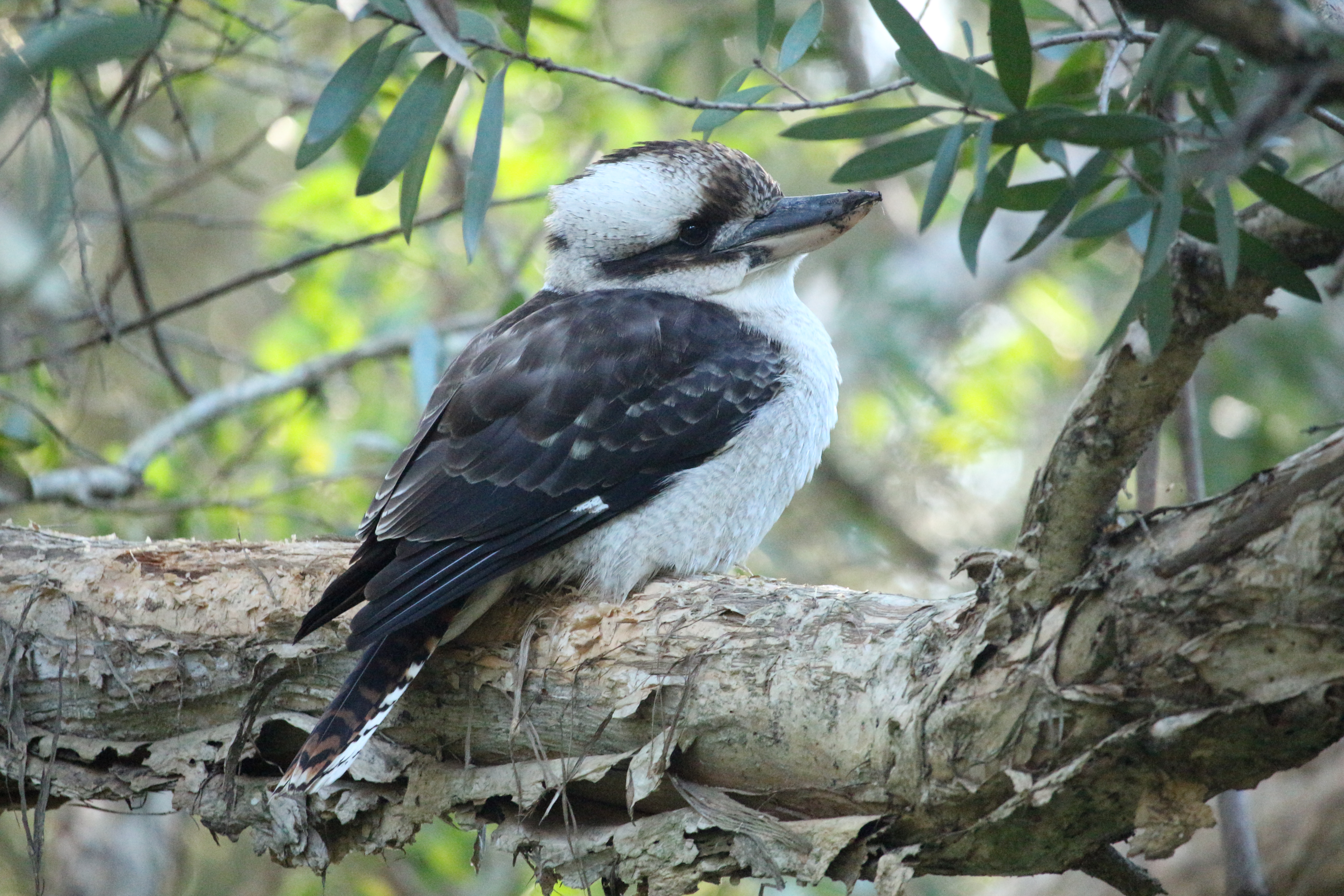Introduction
In the New England region of northern NSW there are many types of grassy woodland. Each one is characterised by an association of eucalypts.
Eucalypt association
A eucalypt association is made up of different species which share similar requirements of soil type and micro-climate and that are often found together. One example is the association of Red Gum (Eucalyptus blakelyi) and Yellow Box (Eucalyptus melliodora) which grow together on lower slopes where soils are deeper and more fertile than on upper slopes.
Characteristics of grassy woodland trees
Trees of the New England grassy woodlands are seldom tall, most acquiring a height of little more than 25m. Trees are not very close together although their crowns often touch. In the 1800s, John Oxley described these woodlands as being like parkland.
Animals
The New England grassy woodlands are home to a number of large mammals. In particular, the Eastern grey kangaroo (Macropus giganteus) is still common and seen in large mobs in some areas. In addition there are koalas (Phascolarctos cinereus), echidnas (Tachyglossus aculeatus), a variety of possums (especially the brushtail, ringtail and smaller sugar glider) and insectivorous micro-bats. These woodlands are also home to a wide variety of birds.
Location
The New England region is a high plateau in Northern NSW with the grassy woodland communities occupying areas over 600 metres elevation.
Climate
Rainfall varies from 800mm in the East to 550mm in the West. Significantly, the winters are dry, cold and frosty with occasional snowfall. Frost may occur at any time of year but most frequently is expected between April and September. Summer days are warm but nights are usually cool.
Examples
New England grassy woodlands can be seen near Armidale at Imbota Nature Reserve and at Mount Duval.
Google Earth
An example of a grassy woodland lies in the area around Guntawang on Google Earth. To move out of street view level and look at the wider area click the yellow person icon in the bottom right hand corner. This resource will only work in the Google Chrome browser.
Significance
Habitats
The New England grassy woodlands are important habitats, making possible a link between animals and plants on the coast to the East with those of the slopes and plains to the West. As climate slowly changes, opportunities for animals and even for plants to shift to more favourable locations are increasingly vital.
Indigenous sites
In the past Indigenous people were able to make a living in the woodlands, finding clear water and abundant wildlife for food. In the present, local Indigenous people place great value on traditional sites of significance that are recognised in the region.
Economic uses
The area formerly occupied by the New England grassy woodlands is now economically important. Fine wool and meat are produced, with sheep and cattle grazing on both improved and native pastures.
Agriculture
The well adapted native pastures are often drought resistant and some continue to provide green feed during the frosty winter months. Today, many landholders value remnants of the woodland on their properties, and have conservation strategies to retain them.
Conservation
Land clearing
The main threat to New England grassy woodlands and the animals which inhabit them is clearing for agriculture. Large areas of habitat have been entirely removed and other areas have been degraded by trampling and grazing of livestock. Threatened animal species include the eastern bent-wing bat, brush-tailed rock wallaby, spotted-tailed quoll, yellow-bellied glider and glossy black cockatoo.
Invasive species
Other threats to the New England grassy woodlands include rabbits, foxes and weed invasion. Rabbits defoliate young native plants. Foxes and cats prey on wildlife. Weeds compete with native plants, eventually replacing them and thereby reducing habitat for native animals even further.
Roadside spaces
In some places, roadsides and travelling stock reserves are important islands of biodiversity and some act as corridors between remnant bush areas that have not been heavily disturbed. However removing timber from roadsides also sometimes impacts these areas.
Local councils try to conserve roadside habit, using signposts to mark ‘Significant Roadside Reserves’. Students can also help to conserve remaining areas of biodiversity.
Conservation groups
Other groups who work towards maintaining the New England grassy woodland and native animal species include Southern New England Landcare, New England North West Landcare and New England Wildlife Carers. The groups are usually made up of landholders who work together to identify wildlife corridors that exist across property boundaries. Where necessary they fence off existing corridors to protect them and sometimes plant native trees and shrubs to create new corridors.
Environmental education centres

Thalgarrah
Thalgarrah Environmental Education Centre (EEC) is located beside a remnant of New England grassy woodland and by a permanent water course, the Gara River. The woodland and the river are key sites for enjoyment and investigation by visiting student groups.
Programs
The study programs offered by Thalgarrah EEC encourage students to appreciate, understand and value the natural environment. Programs link students’ lives to the long term sustainability of the environment and encourage students to act upon their understanding of the interconnectedness of life and sustainability into the future.
Syllabus outcomes
All programs are carefully structured to address NSW syllabus outcomes across Key Learning Areas and activities are designed to cater for individual class requirements. The EEC welcomes school groups who visit for just one day and also those who wish to stay for longer periods, using our comfortable accommodation facilities.
Learn more about Thalgarrah EEC study programs.
Other Environmental Education Centres
Other Environmental Education Centres that provide access to grassy woodlands include: Cascade (North Coast), Camden Park, Red Hill.
Further information
Visit the Thalgarrah EEC website
For inquiries and bookings, contact:
Thalgarrah Environmental Education Centre
Rockvale Road, Armidale NSW 2350.
Telephone: 02 6775 1736 Fax: 02 6775 1681
Email: thalgarrah-e.school@det.nsw.edu.au
Useful links
Threatened species: species, populations & ecological communities of NSW – Office of Environment and Heritage
North West Local Land Services has useful resources, including: